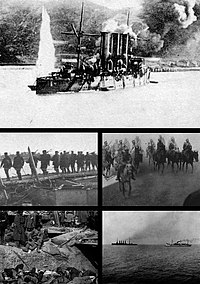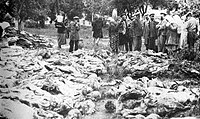-
Use Cases
-
Resources
-
Pricing
Russian Revolution Timeline
(February 1917 - December 1922)Key Facts
- The Russian Revolution began with the collapse of the Russian monarchy in February 1917.
- The February Revolution resulted in the abdication of Tsar Nicholas II and the establishment of a provisional government.
- The October Revolution in 1917 led to the rise of the Bolsheviks and the establishment of Soviet power.
- The Russian Civil War, which lasted from 1918 to 1922, was fought between the Red Army (Bolsheviks) and the White Army (anti-Bolshevik forces).
- The Russian Revolution resulted in the creation of the Soviet Union in December 1922.
Source
This Russian Revolution timeline was generated with the help of AI using information found on the internet.
We strive to make these timelines as accurate as possible, but occasionally inaccurates slip in. If you notice anything amiss, let us know at [email protected] and we'll correct it for future visitors.
Create a timeline like this one for free
Preceden lets you create stunning timelines using AI or manually.











